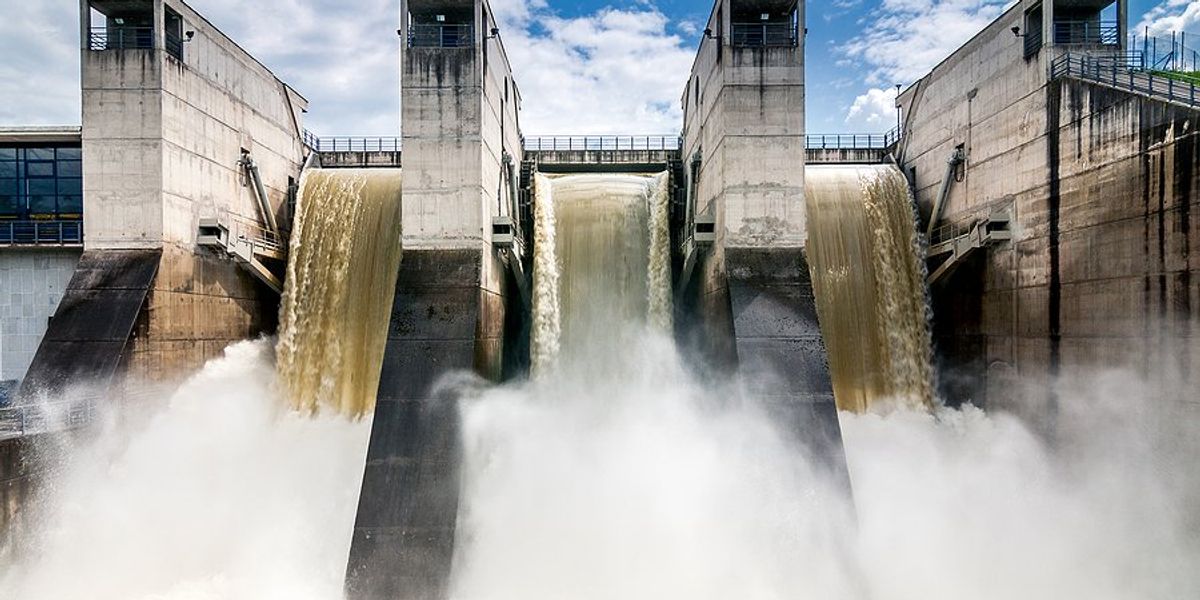costs
Trump blames Biden for high electricity prices to gain political edge
Former President Donald Trump criticizes President Joe Biden for rising electricity costs, leveraging it as a campaign issue.
In short:
- Trump vows to reduce energy prices and blames Democrats for the current high costs.
- Republicans criticize Biden’s climate policies, linking them to a 20% rise in electricity prices since 2020.
- Experts say short-term electricity prices are more influenced by state regulators and natural gas prices than federal policies.
Key quote:
“They could say we’re just going all in on fossil fuels and to hell with the carbon emissions. That would probably have some effect but relatively small.”
— Severin Borenstein, professor at the Haas School of Business at the University of California, Berkeley
Why this matters:
Electricity prices are becoming a significant political issue, with Republicans using them to attack Democratic climate policies. As energy costs rise, voters may become more concerned about the economic impact of these policies.
Be sure to read EHN’s piece:
The people who supply food in America are facing hunger
Climate change and rising costs are forcing many farmworkers in the U.S. to struggle with food insecurity.
In short:
- Farmworkers like Rosa Morales face extreme heat, low wages, and lack of protection while working.
- Rising food prices and decreased crop yields due to climate change worsen their financial strain.
- Many farmworkers are ineligible for federal aid, leading to reliance on community gardens and food pantries.
Key quote:
“When we talk about supply chains and food prices going up, we are not thinking about the people who are producing that food, or getting it off the fields and onto our plates.”
— Nezahualcoyotl Xiuhtecutli, National Sustainable Agriculture Coalition
Why this matters:
Farmworkers, who are already among the lowest-paid laborers in the country, are bearing the brunt of climate-driven disasters and inflation. Extreme weather events like droughts, floods, and heatwaves are reducing crop yields and disrupting work schedules. This not only diminishes their earnings but also exacerbates the physical strain of their jobs. The rising costs of living, driven by inflation, are stretching their already thin budgets to the breaking point.
Be sure to read:
Louisiana eases insurance cancellations, raising concerns
A new Louisiana law allows insurers to cancel more homeowners’ policies, raising premiums and deductibles and potentially increasing financial strain for residents.
In short:
- Louisiana’s Legislature approved a law permitting insurers to cancel up to 5% of longstanding policies annually.
- Consumer advocates warn the law will lead to higher premiums and increased financial hardships for residents.
- The state’s Insurance Commissioner argues deregulation is necessary to stabilize the market and attract more insurers.
Key quote:
“I speak with consumers every day. Based on what I’m hearing from them and based on my own experience, insurance becoming too expensive for homeowners isn’t a potential future event — it’s the status quo and has been for quite some time.”
— Tim Temple, Louisiana Insurance Commissioner
Why this matters:
With the new law, many Louisiana homeowners may face increased financial pressure, leading to possible foreclosures and homelessness. The law may also worsen the insurance crisis already seen in states like California and Florida.
Flooding poses growing economic threat with annual costs reaching hundreds of billions
Flooding, increasingly severe due to extreme weather, is costing the U.S. economy between $179.8 and $496 billion annually, according to new Senate Joint Economic Committee data.
In short:
- The annual cost of flooding is now more than 1% of the U.S. GDP, stressing the insurance industry and homeowners.
- Infrastructure upgrades needed for flood protection range from $70 billion to $345 billion.
- Rising sea levels and frequent heavy precipitation are driving increased flood risks linked to human-caused climate change.
Key quote:
“We find around $100 billion in annualized damages to properties due to flood risk.”
— Jeremy Porter, head of climate implications for the research group First Street Foundation
Why this matters:
As climate change intensifies, the economic burden from flooding is expected to grow, affecting businesses, homeowners, and the insurance industry. For families, this means increased insurance premiums and, in many cases, the heart-wrenching decision to relocate. For health professionals, the aftermath of flooding brings a surge in waterborne illnesses and mental health crises. For scientists and regulators, the data is a clarion call to double down on climate resilience strategies, investing in better flood defenses, sustainable urban planning, and robust early warning systems.
Rising insurance costs leave more homeowners uninsured
A growing number of homeowners are opting out of insurance as policies become more expensive and climate-related disasters increase.
In short:
- Many Americans, facing rising home insurance costs, are choosing to go without coverage.
- Insurers like State Farm are pulling out of high-risk areas, leaving homeowners with expensive alternatives.
- The rate of uninsured homeowners is rising, particularly among those who own their homes outright.
Key quote:
“It’s very unrealistic for any homeowner to think they can pay for catastrophic losses out of pocket.”
— Mark Friedlander, director of corporate communications, Insurance Information Institute
Why this matters:
As disasters become more frequent, the lack of insurance exacerbates the vulnerability of communities, making recovery slower and more challenging. It also emphasizes the need for robust climate action and adaptation measures to mitigate the risks and reduce the long-term costs associated with climate-related disasters.
Renewable gas proposal by FortisBC falls flat with regulator
In a setback for FortisBC, the British Columbia Utilities Commission has turned down a proposal aimed at pushing renewable natural gas for new buildings, citing unfair cost burdens on existing customers.
In short:
- The plan would have had current FortisBC customers subsidize the higher costs of renewable natural gas for new connections.
- Renewable natural gas is seen as carbon-neutral because it comes mainly from existing emissions sources that are captured and redirected as energy, such as methane from landfills, dairy farms and sewage plants. However, it comes with higher expenses compared to traditional natural gas.
- Despite rejection of the full proposal, FortisBC can still sell and blend renewable natural gas for customers willing to share in the additional costs.
Key quote:
"This is squirrely accounting and BCUC yesterday said we’re not having any of that."
— Eoin Finn, director of research for My Sea to Sky
Why this matters:
Energy companies like FortisBC are under pressure to meet climate targets while keeping costs affordable for customers. The cost of investments in new technologies and infrastructure are significant, and how they are financed varies widely across different regions and companies.
Ensuring affordability of cleaner energy sources is an environmental justice issue. For more, read Kartik Amarnath's piece: How financial institutions engineered climate injustice and the clean energy colorline.
The high cost of California's atmospheric river: $11 billion
The recent atmospheric river in California has resulted in staggering costs, both financially and in human terms.
In short:
- The atmospheric river in California has caused an estimated $11 billion in damages.
- This extreme weather event highlights the increasing severity and cost of climate-related disasters.
- The impact is particularly severe in expensive neighborhoods, but it also significantly affects less affluent communities.
Key quote:
"The reason the sewers and storm drains aren’t built for anything even close to the catastrophe unfolding in California is largely thanks to cost."
— Dave Levitan, The New Republic.
Why this matters:
This situation emphasizes the urgent need for infrastructure improvements and climate resilience planning, especially in areas prone to extreme weather events. The article also points to the broader implications of climate change on public policy, urban planning, and disaster preparedness.
Preparing for and building back after natural disasters should not be a one-size-fits all approach.



















